The national museum of Cambodia houses one of world’s largest collections of Khmer art, including and not limited to the period of the Khmer Empire, which at its height stretched from Thailand to southern Vietnam. Abandoned during the Khmer Rouge regime and with most of its staff murdered, the museum reopened quickly at its fall and is paramount to promote Cambodian identity and pride.
Here is a non-exhaustive list of a few must-see and pointers that will also help you understand the history of Cambodia and decrypt its art better especially if you are planning on visiting some temples such as Angkor Wat.
The building
The building itself looks like an enlarged Cambodian temple coming straight out of an ancient bas-relief. The naturally ventilated galleries showcase the evolution of Khmer sculptures, influenced by politics and religions over the centuries. Their common characteristics remain their harmony of composition and precision of execution, resulting in a delicate balance between simplicity and details, humility and grandeur, subtlety and expressiveness.
The galleries open on the peacefulness of the inner garden, in the heart of hectic Phnom Penh.
A self-standing sculpture
The Khmer animism got influenced by Indian religions around the time of Christ, and this reflected in the art with the apparition of Hindu and Buddhist themes as well as traditional Indian features such as the faithful depiction of human form. However Khmer artists developed their own style and moved away from the Indian high-relief, making free-standing statues, supported by an arch or by an attribute of the divinity (such as a piece of clothing or a hand-held object).
A Hindu sculpture
Khmer rulers were Hindus and Hinduism symbols are many in Khmer art. In order to identify them better here are a few pointers: in Hinduism, there are three chief gods also referred to as the brahmanistic triad:
- Shiva: the god of destruction often depicted on his bull Nandin or with a third eye on his forehead, a trident and a crescent moon in his headdress,
- Vishnu: the protector of the universe, shown as a human body with four arms holding a conch, wheel, mace and ball,
- Brahma: the creator of the universe, represented with four heads, one facing each cardinal point.
A Buddhist sculpture
Jayavarman VII considered as the greatest Khmer king believed in Buddhism, a religion founded in the 6th century BC as a non-violent way of life using meditation as the path to salvation. The state religion changed from Hinduism to Buddhism in the 12th century and Buddhist symbols appeared more and more frequently like the Buddhist triad:
- Buddha: the enlightened one or the perfect one who has achieved liberation from the endless cycle of rebirth,
- Lokeshvara: the lord of compassion, shown with four arms with a lotus flower, rosary, book and flask with an image of Buddha in his headdress,
- Prajñaparamita: the perfection of wisdom, holding a lotus bud with an image of Buddha in her hair.
An artistic timeline of the Angkor period
Following the Funan (1st to 6th century) and the Chenla period (7th to 8th century), the Angkor period starts in 802 when Jayavarman II set up his capital at Phnom Kulen in the Angkor region, successfully unifies the Khmer people and initiates the cult of the devaraja (god-king). It is characterized by rich artistic developments and production supported by the country’s wealth thanks to trade throughout Asia (exotic woods, rare wild game, precious stones along with abundant fish and rice supplies). If one of its most famous features is the smile of Angkor, many different styles were created then.
The Kulen style (825-875) is named after the Kulen Hills in the north of Angkor from where sandstone was quarried from and floated on rafts along rivers and canals to the building sites. This first recognisable art style of the Angkorian period is characterized by bodies sculpted rigidly upright with distinctive Khmer features such as round faces and broad brows.
The Koh Ker style (941-944) is characterized by gigantic figures of humans and animals captured dynamically.
The Banteay Srei style of the late 10th century adorns rich decorations on the warm tones of the pink sandstone.
The statues of the Baphuon style (1010-1080) are slim and graceful.
The Angkor Wat style (1100-1175) presents the highest achievements in architecture and ornamentation of buildings and bas-reliefs. Sculpted figures are upright, muscular and formal, wearing ornate belts and jewellery.
The Bayon style (late 12th to early 13th century) under Jayavarman VII produced a great number of Buddhist images in combination of Hindu symbols following the religious tolerance of the king. The Bayon style also developed portraiture and most specifically royal portraits often as Buddhist deities.
The Post-Angkor period
Not long after the end of Jayavarman VII’s reign, stone art production and monumental temple building became almost non-existent in Khmer culture. With the wide-spread conversion to Theravada Buddhism (15th century), wood became the primary medium for Khmer sculpture, and only a small number of wood statues have survived.
With this in mind, you may understand and enjoy temples better, trying to identify religious symbols or periods.
Claire
Travel tips:
- For the logistics, refer to the official website.
- To download this article and to read it offline please refer to GPSmyCity.
- Check out this interactive map for the specific details to help you plan your trip and more articles and photos (zoom out) about the area!
Don’t know where to start? Get inspired:










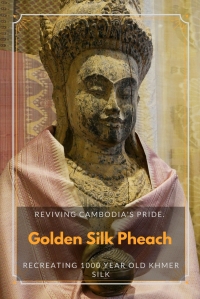
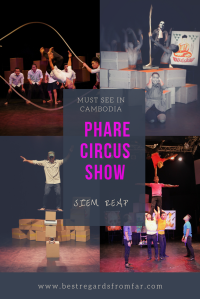
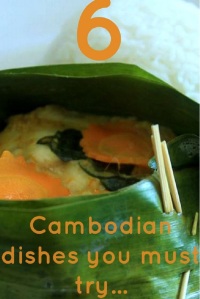

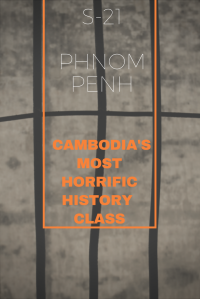


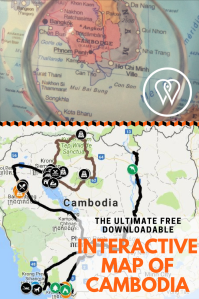
Would love to visit Cambodia.. 😉